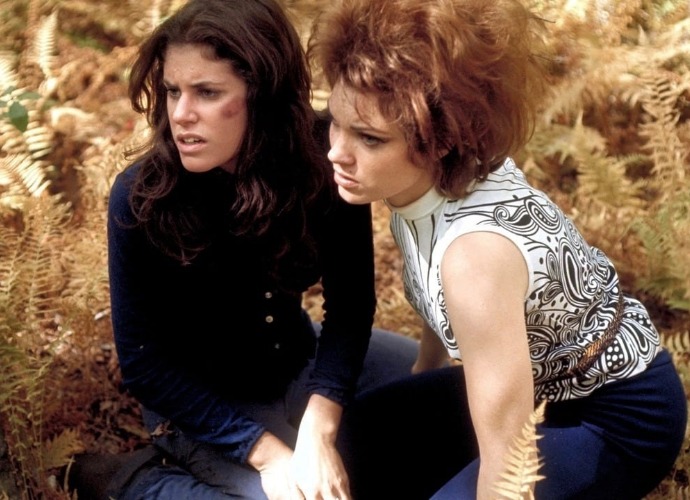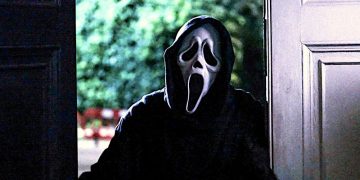Of the many iconic filmmakers who could contend for "King of Horror," only one can truly sit on the throne: the renowned "Master of Horror" Wes Craven. His name is associated with many iconic horror films, and he's the man who legitimatized and revived the slasher genre.
The Wes Craven style of horror involves a twisted take on genre clichés, opting to insert clever setups, meta humor, and dark comedy into the narrative for extra punch. Yet he never fails to scare us with gory kills, frightening imagery, and dreadful villains.
With the recently released Scream—a sequel to Wes Craven's franchise without his involvement—we thought it was a great time to look back on Wes Craven's best horror films of all time.
10. Swamp Thing (1982)

Yes, Wes Craven once had his hand on a DC Comics adaptation! But it was for Swamp Thing, who mixes heroics with horror elements.
Craven gave it a revenge story treatment, centering on the transformed scientist Alec Holland (played by Ray Wise) who aims to take down the wicked Anton Arcane (played by Louis Jourdan).
Unlike his other projects, Swamp Thing is tame on horror and hefty on action. Yet Craven never lost sight of his eerie side, particularly with Swamp Thing's character and design. This hauntingly surreal Beauty and the Beast story also allowed Adrienne Barbeau's Alice Cable to shine.
9. Red Eye (2005)

Ever felt trapped on a flight, both by the plane... and by a terrorist plot? Wes Craven ran with that opportunity and became his own Hitchcock with this edgy thriller.
The movie follows a hotel manager (played by Rachel McAdams) who's secretly held hostage aboard a flight and used to help a domestic terrorist (played by Cillian Murphy).
It's great to see Craven pull off psychological thrills, yet they would not be possible without the heavy lifting of the two leads. McAdams suits well as the passenger caught in trouble, and Murphy owns it as the seductive but slimy terrorist. Simple yet tense, Red Eye unsettles you.
8. The Serpent and the Rainbow (1988)

Inspired by real-life research, The Serpent and the Rainbow finds Craven with his own take on voodoo horror. This movie follows Dr. Dennis Alan (played by Bill Pullman) who travels to Haiti to investigate an herbal drug that revives locals and turns them into zombies.
While the occult is an easy subject to exploit, Craven remarkably added real exploration of Haitian voodoo, making its terrifying imagery more haunting and inescapable. Also, if you fear insects, occult rituals, or decaying bodies, you might want to watch out.
7. The People Under the Stairs (1991)

Craven had a shot at subtle commentary with The People Under the Stairs. This horror fare about an African-American boy and two robbers who get trapped in a Caucasian couple's home has much more beneath the surface than being just a reverse-home-invasion thriller.
Given its political undertones, Wes Craven knew to strike them with a comical edge. Case in point: the Robesons "Daddy" and "Mommy," who are hilarious caricatures of middle-class suburbanites. Plus, it mixes it all with bloody and creepy scenes.
6. The Last House on the Left (1972)

The Last House on the Left is Wes Craven's directorial debut—and you knew he struck gold as a newcomer when this early slasher flick caused a stir during its time. It even pointed it out in its marketing with the poster and its tagline: "Can a movie go too far?"
Arguably, this is the most difficult Wes Craven movie to watch due to its graphic content and taboos. Even devotees of Craven are pretty split on its mix of shock value and black comedy. But this exploitation horror about the tragic fate of Mari Collingwood is hard to ignore.
5. Wes Craven's New Nightmare (1994)

Before Scream, Wes Craven had his first attempt at meta horror with the seventh Nightmare on Elm Street movie. This entry separates itself from the previous movies and turns Freddy Kreuger into an in-movie villain who invades the real world to haunt the makers of the Elm Street movies.
That framework gives a fresh angle on horror movies as it actually examines how we perceive horror movies. From there, Craven's knack for dread sneaks right in.
But out of all his appearances in the Elm Street sequels, Freddy Krueger is his scariest here when his lighter side is nearly gone. Clever and uncanny, New Nightmare is nothing short of lurid.
4. The Hills Have Eyes (1977)

If Last House on the Left sets the stage for Craven's edgy slasher, The Hills Have Eyes starts his edgy satire. It even follows the same pattern as Last House—with an innocent suburban family being stalked by a family of tormentors. This time, they're cannibals... but just as torturous.
With exploitation cinema taking flight at the time, Craven left no holds barred on showing horror and menace, especially by the cannibal savages. The most distinct is Michael Berryman's Pluto, who became the face of the Hills Have Eyes movies.
Add that with Craven's twisted take on social class, and you have a pulp horror classic. (Just ignore the sequels.)
3. Scream 2 (1997)

Sidney Prescott and her peers find themselves in the same quandary that they were in the first movie, except this time they're in college and they've become targets of another killer donning the guise of Ghostface.
With fresh faces along for the ride, Sidney and company find a more sinister figure behind the mask. It's hard to redo the meta magic of the first Scream, but Scream 2 exceeded expectations with its takedown and deconstruction of horror sequels.
It even included its own in-world version of Scream called Stab. But all of its success comes down to Sidney and company building up from their dynamic the last time.
2. Scream (1996)

Speaking of the original, Scream was released at a time when the slasher genre lost steam to cheap direct-to-video fare. But Craven managed to revive the genre he helped pioneer in a smart way: by poking fun at its clichés with a part-slasher, part-whodunnit, part-dark comedy mix.
Characters like final girl Sidney Prescott, geek Randy Meeks, and gossipy Gale Weathers would not have worked if it weren't for their meta take on horror movies and their chemistry.
Yet even on its own, it's very effective with its scares and its mystery. Just look at the iconic opening scene starring Drew Barrymore. Thanks to this, Wes Craven has not lost his touch.
1. A Nightmare on Elm Street (1984)

Wes Craven's early masterpiece A Nightmare on Elm Street remains his best and arguably scariest movie. The very concept of being murdered in your dreams is haunting on its own—and it's even scarier when it's orchestrated by a murderer with a burnt face and a four-bladed glove.
Freddy Krueger is one of the most iconic slasher killers. His face is scary on its own, but attacks perpetrated via visions of him? Unforgettably chilling. Furthermore, Craven plays with our perception of what is real or imaginary, which makes Freddy Krueger even creepier.



